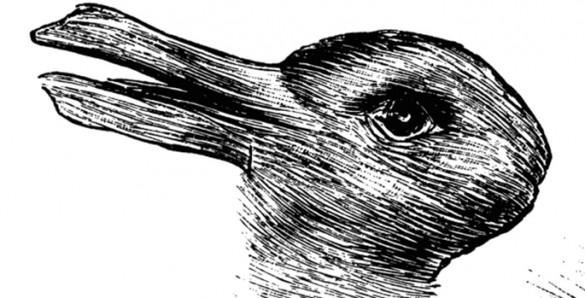
When we view an ambiguous scene, our perception tends to switch back and forth unpredictably between the competing interpretations, such as the famous image above that can be seen as either a duck or a rabbit.
One popular explanation has been that one of the higher-level areas – the fronto-parietal cortex – in the front of the brain is responsible for determining which interpretation currently warrants our awareness. But a new study, co-authored by Centennial Professor of Psychology Randolph Blake with former post-doctoral students in his lab Jan Brascamp, now an assistant professor at Michigan State University, and Tomas Knapen, now an assistant professor at VU University Amsterdam, reveals that these decisions take place in the visual cortex in the back of the brain without any involvement from higher level brain areas.
“Areas of the brain that we think are responsible for creating visual impressions now appear also to chose between competing impressions without the assistance of higher-level brain areas that we thought were involved in cognitive control,” said Blake.
Nature Neuroscience, the journal that published the paper, created a YouTube video to explain the research. Michigan State University wrote this news article about the study, which was published on Oct. 5.